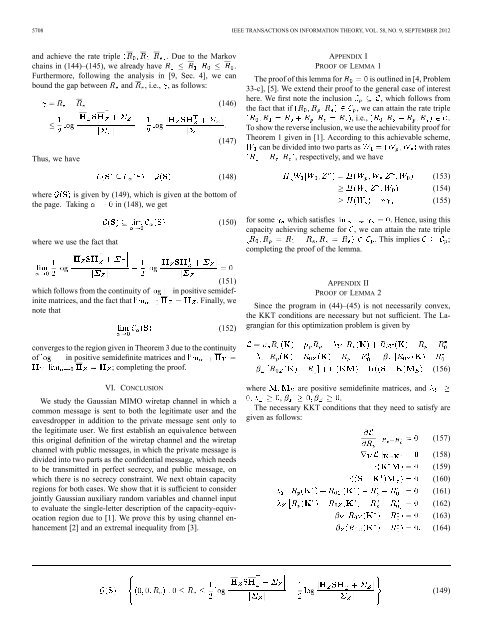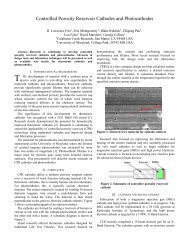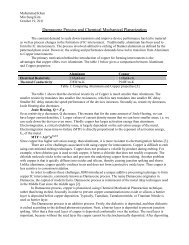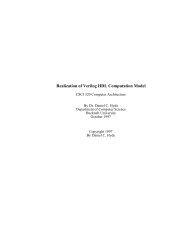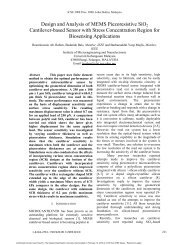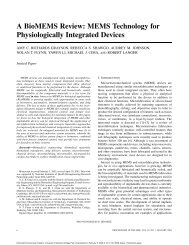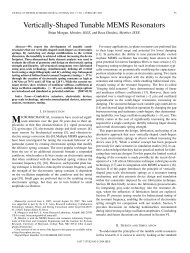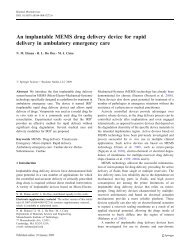Capacity-Equivocation Region of the Gaussian MIMO Wiretap ...
Capacity-Equivocation Region of the Gaussian MIMO Wiretap ...
Capacity-Equivocation Region of the Gaussian MIMO Wiretap ...
You also want an ePaper? Increase the reach of your titles
YUMPU automatically turns print PDFs into web optimized ePapers that Google loves.
5708 IEEE TRANSACTIONS ON INFORMATION THEORY, VOL. 58, NO. 9, SEPTEMBER 2012<br />
and achieve <strong>the</strong> rate triple . Due to <strong>the</strong> Markov<br />
chains in (144)–(145), we already have .<br />
Fur<strong>the</strong>rmore, following <strong>the</strong> analysis in [9, Sec. 4], we can<br />
bound <strong>the</strong> gap between and ,i.e., , as follows:<br />
Thus, we have<br />
(146)<br />
(147)<br />
(148)<br />
where is given by (149), which is given at <strong>the</strong> bottom <strong>of</strong><br />
<strong>the</strong> page. Taking in (148), we get<br />
where we use <strong>the</strong> fact that<br />
(150)<br />
(151)<br />
which follows from <strong>the</strong> continuity <strong>of</strong> in positive semidefinite<br />
matrices, and <strong>the</strong> fact that . Finally, we<br />
note that<br />
(152)<br />
converges to <strong>the</strong> region given in Theorem 3 due to <strong>the</strong> continuity<br />
<strong>of</strong> in positive semidefinite matrices and<br />
; completing <strong>the</strong> pro<strong>of</strong>.<br />
VI. CONCLUSION<br />
We study <strong>the</strong> <strong>Gaussian</strong> <strong>MIMO</strong> wiretap channel in which a<br />
common message is sent to both <strong>the</strong> legitimate user and <strong>the</strong><br />
eavesdropper in addition to <strong>the</strong> private message sent only to<br />
<strong>the</strong> legitimate user. We first establish an equivalence between<br />
this original definition<strong>of</strong><strong>the</strong>wiretapchanneland<strong>the</strong>wiretap<br />
channel with public messages, in which <strong>the</strong> private message is<br />
divided into two parts as <strong>the</strong> confidential message, which needs<br />
to be transmitted in perfect secrecy, and public message, on<br />
which <strong>the</strong>re is no secrecy constraint. We next obtain capacity<br />
regions for both cases. We show that it is sufficient to consider<br />
jointly <strong>Gaussian</strong> auxiliary random variables and channel input<br />
to evaluate <strong>the</strong> single-letter description <strong>of</strong> <strong>the</strong> capacity-equivocation<br />
region due to [1]. We prove this by using channel enhancement<br />
[2] and an extremal inequality from [3].<br />
APPENDIX I<br />
PROOF OF LEMMA 1<br />
The pro<strong>of</strong> <strong>of</strong> this lemma for is outlined in [4, Problem<br />
33-c], [5]. We extend <strong>the</strong>ir pro<strong>of</strong> to <strong>the</strong> general case <strong>of</strong> interest<br />
here. We first note <strong>the</strong> inclusion , which follows from<br />
<strong>the</strong> fact that if , we can attain <strong>the</strong> rate triple<br />
,i.e., .<br />
To show <strong>the</strong> reverse inclusion, we use <strong>the</strong> achievability pro<strong>of</strong> for<br />
Theorem 1 given in [1]. According to this achievable scheme,<br />
can be divided into two parts as with rates<br />
, respectively, and we have<br />
(153)<br />
(154)<br />
(155)<br />
for some which satisfies . Hence, using this<br />
capacity achieving scheme for , we can attain <strong>the</strong> rate triple<br />
. This implies ;<br />
completing <strong>the</strong> pro<strong>of</strong> <strong>of</strong> <strong>the</strong> lemma.<br />
APPENDIX II<br />
PROOF OF LEMMA 2<br />
Since <strong>the</strong> program in (44)–(45) is not necessarily convex,<br />
<strong>the</strong> KKT conditions are necessary but not sufficient. The Lagrangian<br />
for this optimization problem is given by<br />
(156)<br />
where are positive semidefinite matrices, and<br />
, .<br />
The necessary KKT conditions that <strong>the</strong>y need to satisfy are<br />
given as follows:<br />
(157)<br />
(158)<br />
(159)<br />
(160)<br />
(161)<br />
(162)<br />
(163)<br />
(164)<br />
(149)


